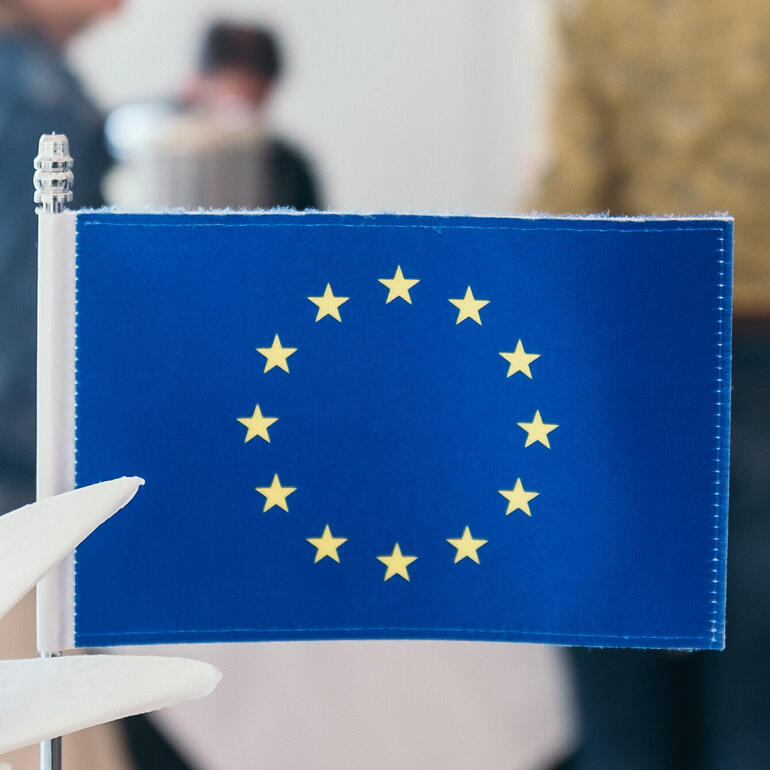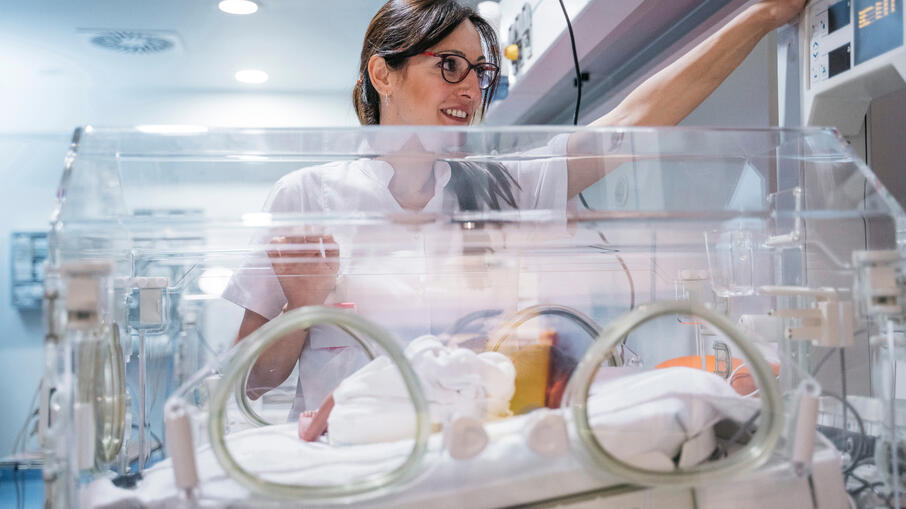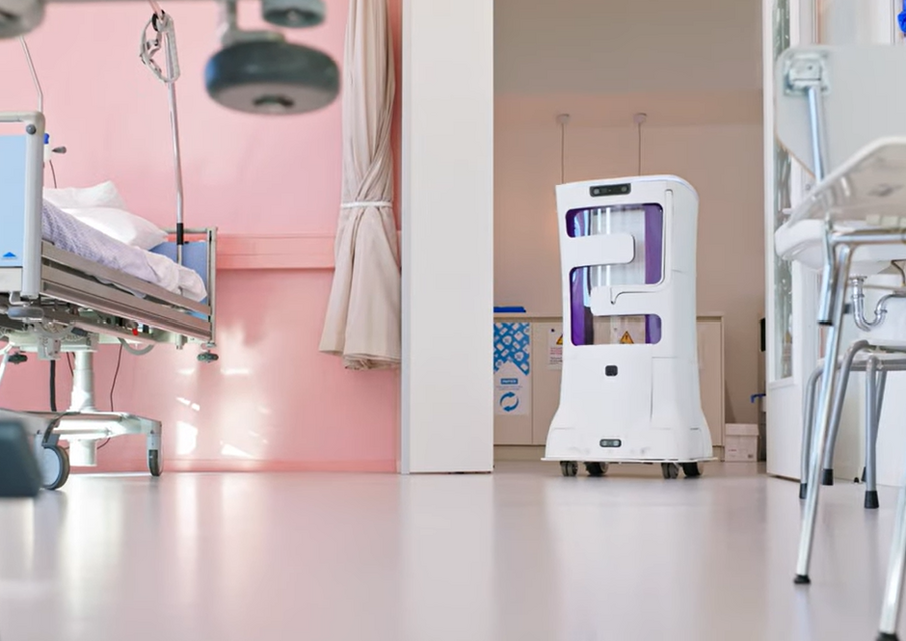Requirements and Specifications Document
Summary of the Requirements and Specifications Document
Smart-NeonaTO | 03/02/2025

Summary
[For more information, contact John Vissers from Demcon Macawi]
Requirements & specifications
WP5 smartneonato
Contents
3.1 System use scenarios & related (non) functional requirements. 7
3.2 System purpose & performance specifications. 7
5. regulatory, safety, security and legal needs. 15
Project introduction
This project is about a prototype system (at TRL6-7) that supports baby stability. The system consists of three subsystems:
Artificial Intelligence driven care coach. This supports the healthcare provider in his/her decision-making with near-real-time information and advice. These advices are generated by an AI analysis that analysis sensor data in the delivery room (from the existing systems and a new sensor patch).
A smart sensor patch for newborns. Existing patch technologies can harm the baby skin and have delayed/disrupted signals so there is a need for a new sensor patch for these newborns. Immediately at birth, the newborn baby receives this smart patch, from which heart rate, temperature and oxygen saturation can be measured accurately, user-friendly for the caregiver and stress-free for this kind. Because the data is quickly available, a quick(er) intervention is possible that can prevent permanent health damage. A new measurement realized by this patch is the baby's spontaneous (own) breathing activity using sEMG.
An innovative respiration module can be used to ventilate invasively and non-invasive synchronized with the baby. To synchronize with the baby, the respiration module is “triggered” based on spontaneous breathing activity in the patch. This can prevent long-term brain damage.
The smart patch and respiration module will be connected to a monitor, which functions as a central interface for the healthcare provider. Bidirectional communication is possible, so that the respiration module can be adjusted by the AI system (partially and later completely in a closed loop). The monitoring system will be accessible via a Cloud connection. This allows specialist centers to monitor and advise on more complex stabilizations.
System introduction
This chapter provides general background information to understand the customer’s view on the scope of the project.
Delivery context
Preterm is defined as babies born alive before 37 weeks of pregnancy are completed. There are sub-categories of preterm birth, based on gestational age:
extremely preterm (less than 28 weeks)
very preterm (28 to less than 32 weeks)
moderate to late preterm (32 to 37 weeks).
Babies may be born preterm because of spontaneous preterm labour or because there is a medical indication to plan an induction of labour or caesarean birth early.
Source: https://www.who.int/news-room/fact-sheets/detail/preterm-birth
Once the baby is born, there are 3 location where the babies are resuscitated / taken care off:
- On the mother (skin to skin)
- Concorde table (cord clamping)
- At a certain distance on a "conventional" delivery table (e.g. 3 meter from mother or in separate room)
Below a typical “conventional” configuration of the medical equipment used for resuscitation after birth of the baby.
A typical configuration is a resuscitation table, platform to stabilize, heater, clock, resp support, FiO2 titration & plastic bag for temperature management (prematures <32wk).
Babies born <32 weeks are often put in a "sandwich baby bag" directly after birth to assure that the wet skin remains wet and that the temperature of the baby does not drastically decrease because of evaporation.
Ventilation in the delivery context is most often done with basic ventilation equipment. Later at a NICU more advanced tooling is added, although some hospitals also use more advance equipment at the delivery room but then there is the strategy that the equipment moves with the baby to the NICU as can be seen in below figure.
System design & usage
System use scenarios & related (non) functional requirements
Before, during and after the resuscitation multiple stakeholders are involved:
- Neonatologists
- Parents
- Nurses
- Students
Clinical physicians
Each of these stakeholders has their own needs for the system which will be captured in this section using (user) scenarios.
During the delivery of a pre-term typically the following persons have the following activities:
Doctor 1: airway management & ventilation
Doctor 2: Heart rate management & overall overview
Nurse 1: Pulse oxygenation & temperature
Nurse 2: Materials
Student: overall overview + notes
System purpose & performance specifications
The project has two development lines:
1. data flows and visualization
2. sensor patch and ventilation.
For development line 1:
During care, there is a need for a central presentation of data, which selectively shows the right data to the stakeholder at the right time (high frequency & real time). This requires parameters from different systems to be integrated, jointly interpreted and displayed based on decision rules.
An optimal presentation must be set up, which makes it possible to show trend views and hide irrelevant data.
For development line 2:
The primary goal with regard to ventilation is to develop non-invasive respiratory monitoring to trigger ventilation and/or to provide advice on (faster) reduction of ventilation. In the long term, closed-loop control of the ventilation system is the ultimate goal, but within the project timeframe a clinical decision support system is a more achievable goal.
An important point of attention within this development line is the development of a patch that is suitable for sensitive neonatal skin.
The following measurements are needed with their related performance specifications:
Measurement |
Requirement |
Wish |
Heart rate |
x |
Data to be available as soon as possible after the birth / the moment the sensor is applied. |
ECG |
x |
Full waveform doesn’t need to be a specific ECG projection. Data to be available as soon as possible after the birth / the moment the sensor is applied. |
EMG (e.g. Respiration rate (based on sEMG)) |
x |
|
Oxygen saturation (peripheral) |
x |
Normogram graph |
Respiratory flow (e.g. RFM method, respiration monitor) |
x |
System with flowsensor near nose before ventilation mask |
Temperature |
Wish |
|
Leakage from the mask |
Wish |
|
CO2 |
Wish |
|
FiO2 |
x |
Ventilator, desired is measurement and/or estimation at the baby |
The list is based on the workshop results and the following article with an overview of developments in delivery room monitoring - including a survey among healthcare providers: The newborn delivery room of tomorrow: emerging and future technologies - PubMed (nih.gov):
What healthcare providers want according to the above article:
Left: Survey respondents’ (n= 60) ranking of the importance of key monitoring measures within the delivery room. Van <https://www.nature.com/articles/s41390-022-01988-y>
Right: survey ranking by respondents (n= 60) for new technology priorities within the delivery room of the future. Van <https://www.nature.com/articles/s41390-022-01988-y>
State of the art
Here an overview of state of the art (monitoring) equipment as used in the delivery context is given.
Company / website |
Explanation / figures |
The ANNE (Advanced NeoNatal Epidermal) Chest sensor is a clinical-grade monitoring device that measures heart rate, respiratory rate, temperature, body position, activity, and more. Reusable and rechargeable, it seamlessly transmits data real-time for comprehensive clinical care.
The ANNE (Advanced NeoNatal Epidermal) Limb sensor is a clinical-grade monitoring device that measures SpO2 pulse rate, perfusion index, and skin temperature. Reusable and rechargeable, it seamlessly transmits data real-time for comprehensive clinical care.
|
|
https://laerdal.com/us/products/medical-devices/perinatal-and-neonatal/neobeat/ |
NeoBeat is a reusable, consumable-free, and easy-to-use heart rate meter that provides an accurate and continuous display of newborn heart rate. NeoBeat takes seconds to put on a newborn's abdomen, and the instantaneous heart rate can help guide neonatal resuscitation.
|
Wireless heart rate monitoring cap for babies
|
|
AUGMENTED INFANT RESUSCITATOR (AIR): |
The Augmented Infant Resuscitator (AIR) is a low-cost, reusable device designed to provide birth attendants real-time objective feedback on measures of ventilation quality during resuscitations and is intended for use in training and at the point of care.
|
https://www.fphcare.com/en-gb/hospital/infant-respiratory/neonates/resuscitation/neopuff/ |
The F&P Neopuff delivers controlled, consistent and precise pressures – independent of operator experience.1,2 It can provide assisted respiratory breaths to neonates and infants (up to 10 kg in weight) in the delivery room (DR) or neonatal intensive care unit (NICU).
Compared with self-inflating and flow-inflating bags, T-piece resuscitators such as the Neopuff™ deliver a more controlled and consistent peak inspiratory pressure (PIP) and positive end-expiratory pressure (PEEP),6,7 which helps protect the newborn’s lungs.
|
https://www.monivent.se/wp-content/uploads/3330MSM01-Monivent-Neo100-Product-Leaflet-EN.pdf |
Monivent Neo100 is a solution for wireless monitoring and guidance during manual ventilation of newborns. Parameters that previously could only be estimated can now be measured accurately. The Monivent Neo100 gives continuous, real-time feedback on several ventilation parameters, including tidal volume and leakage, enabling the caregiver to adjust treatment and support safe and gentle ventilation of newborns.
MMC feedback on Monivent: not working as expected
|
Respiratory Function Monitor (RFM) The newLifebox Neo-RSD connects to various devices in the delivery room in order to record data for scientific studies.
|
|
The all-new ARNE NLS Advisor is a Clinical Decision Support System (CDDS) for Neonatologists and Pediatricians, designed to assist during newborn life support procedures, aiming to reduce cognitive load, avoid mistakes, and improve focus in these complex, stressful and time sensitive situations. The ARNE NLS Advisor uses sophisticated algorithms, processing four vital sign parameters of the newborn baby in real-time: heart rate, oxygen saturation, respiration rate and temperature. Combining these vitals with all steps of the complex International Newborn Life Support protocol. At the same time, keeping track of timing and presenting the most important info audio visually on the device interface. Guiding the delivery room team through all steps of the NLS protocol,
|
|
HeRO provides an automated, noninvasive method to detect transient decelerations and reduced baseline heart rate variability. HeRO continuously acquires, records, measures and analyzes variations in R-R Intervals, and provides ongoing display of this information.
|
|
ASOR - automated system for oxygen control during resuscitation
|
System overview
Classified
regulatory, safety, security and legal needs
- Technology in the delivery room supporting the neonatal healthcare provider's task - PubMed (nih.gov)
- Reanimatieraad; HS 7 Richtlijnen 2021 (reanimatieraad.nl) (bewerking voor de Nederlandse situatie van de door de European Resuscitation Council (ERC) gepubliceerde richtlijn 2021: ‘European Resuscitation Council Guidelines 2021: Newborn resuscitation and support of transition of infants at birth’)





